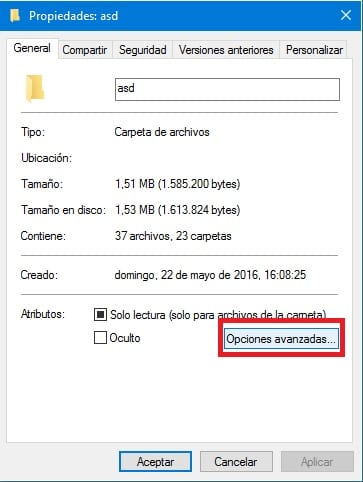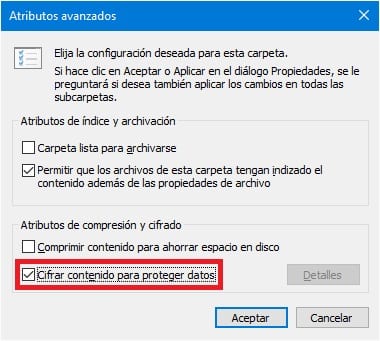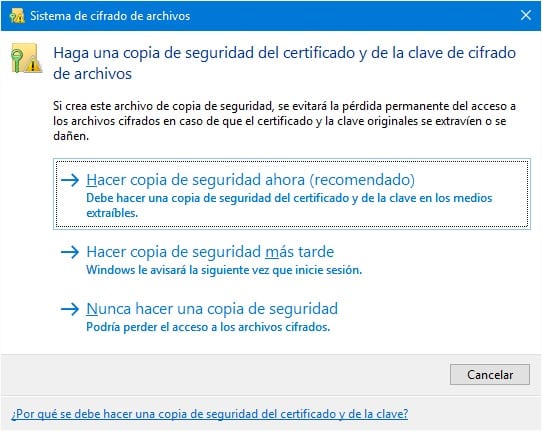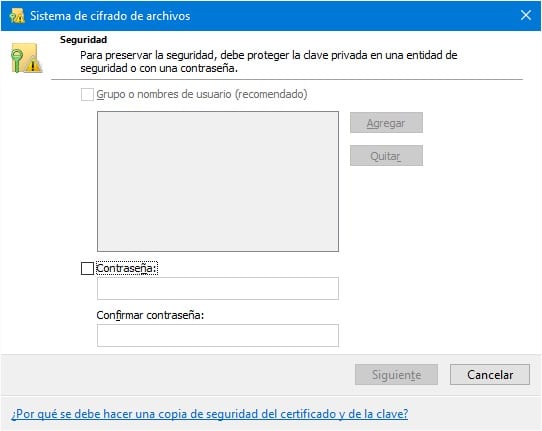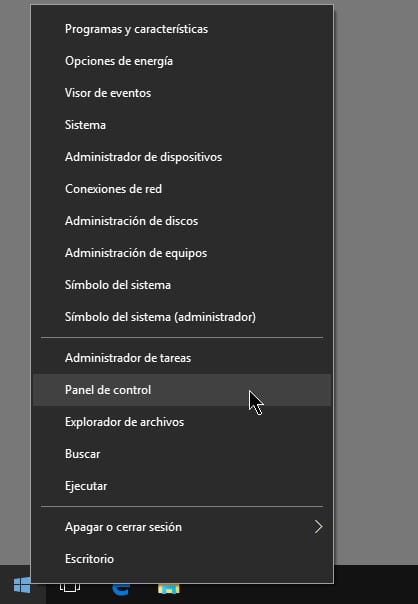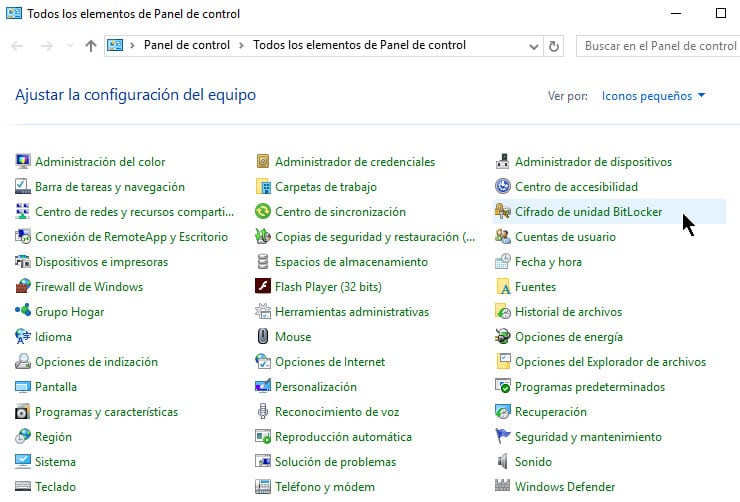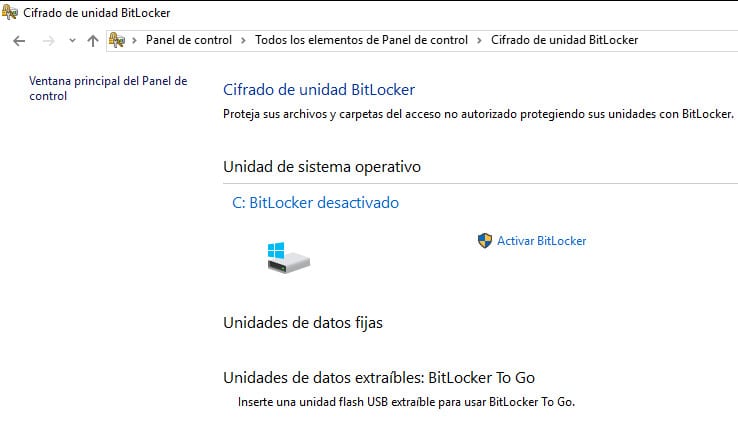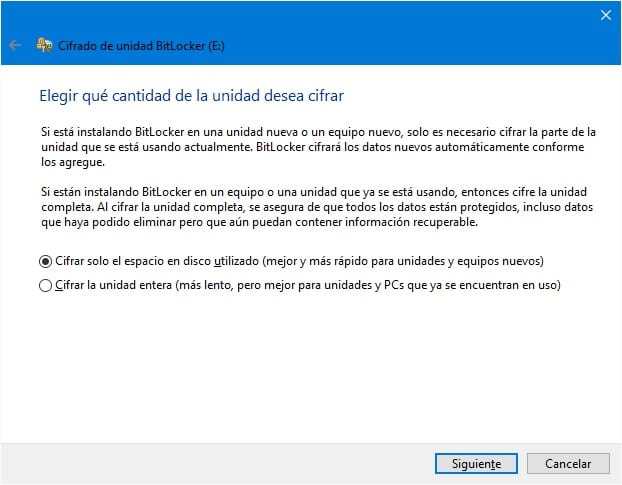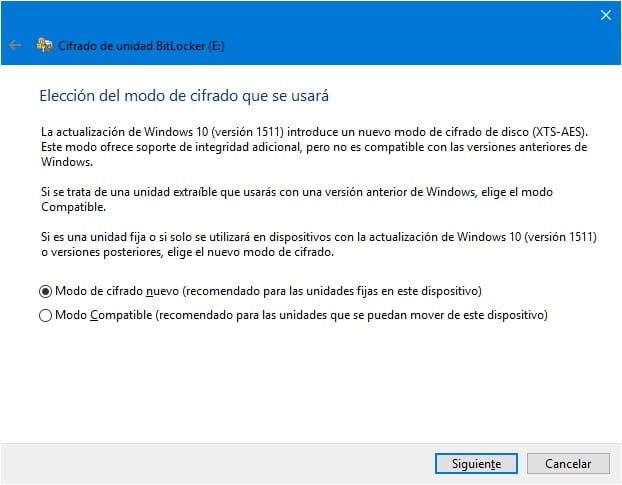
Microsoft has always been a company concerned with the security of user data. Since Windows XP an encryption system called EFS was implemented that allowed to safeguard sensitive information through a password established by the user, a system that has been maintained up to current Windows 10 for compatibility and despite its security problems.
With the passage of time, the encryption function has been improved in the following versions of the system, in addition to the emergence of third-party tools for the same purpose or, even, to be implemented a new one through virtual containers called BitLocker. In the next tutorial we will show you some ways to encrypt your data using Windows 10.
Encrypt information with EFS
Probably the fastest way to encrypt a document within a computer with Windows 10 it is using its own encryption utility called EFS (Encrypted File Service). This tool is very simple and will provide protection for all your files in a matter of a few clicks.
Before we show you the system, we must warn you that the files encrypted by means of the EFS are associated with the user account with which they are created. Other user accounts, even if they have administrator permissions, will not be able to access your content. Thus, make sure you keep your password or your file will be locked forever.
Then we can get down to work. These are the specific steps you must follow to encrypt a file using the EFS service:
- Do right-click on the file or folder that you want to protect and go to the menu Properties.
- At Lóleo Eventos, General tab, click on the button that indicates Advanced Options…
- Below the option box to Compress content to save disk space, you will see another that says Encrypt content to protect data. We will select it and click on the OK button.
- In the case of directories, the system will ask us if we want to encrypt the content of the entire folder or also include that of all files and subfolders let them hang from it. Choose the option that interests you and accept the changes.
With this we would have finished the encryption of the information. Your files and folders are now protected from other people's eyes and the padlock on its icon is an example of this. Everything this process is reversible, and just go back to the file properties and uncheck the Encrypt content option to decrypt the content of files and folders.
However, in Windows Noticias we know that memory is fragile and it never hurts to have a backup of our password For security. That is why we show you below how to make a backup copy of your EFS encryption key.
Back up the EFS key
The steps you must follow if you want to make a backup copy of your EFS key are the following:
- Click on the toaster what will appear to you when encrypting with EFS and choose Make a backup.
- Choose Backup now.
- Export the certificates proposed by the system, leaving the options that it indicates intact. We will press the button Next.
- We will choose the password to export the certificate and later its location.
With these steps we would have successfully exported the file with the EFS key to recover our files.
Encrypt information with BitLocker
To activate BitLocker encryption in Windows 10 we will follow the following steps:
- Access the Control Panel from the user menu (right click on the start button).
- Open up BitLocker Drive Encryption.
- En Operating system disk drive, expand the disk drive information, then tap or click Enable BitLocker. You may be asked to provide an administrator password or confirm your choice.
- The Disk Drive Encryption Wizard BitLocker may take a few moments to prepare your computer. Follow the instructions until the screen appears Select how to unlock the disk drive on startup.
- Choose how you want to lock the unit and then follow the instructions until the How do you want to back up the recovery key? screen appears.
- Choose how you want to back up the recovery key, then tap or click Next.
- You may want to print a copy of the security key to save it.
- Choose which disk drive volume you want to encrypt, then tap or click Next.
- Do any of the following:
- For immediately start encryption drive, tap or click Start encryption.
- To make sure your PC can read both the encryption key and the recovery key, check the Run BitLocker system check box , and then tap or click Continue.
Run the system check it is one of the methods to ensure that BitLocker works correctly, although it will take longer and you will have to restart the computer. If you choose to run the system check, make sure you've saved what you've been doing before restarting. Upon restart, the computer will ask you to unlock the disk drive operating system with the method you have chosen.
In the same way with BitLocker drive encryption, you can block fixed data discs or removable data disc drives with BitLocker To Go features.
